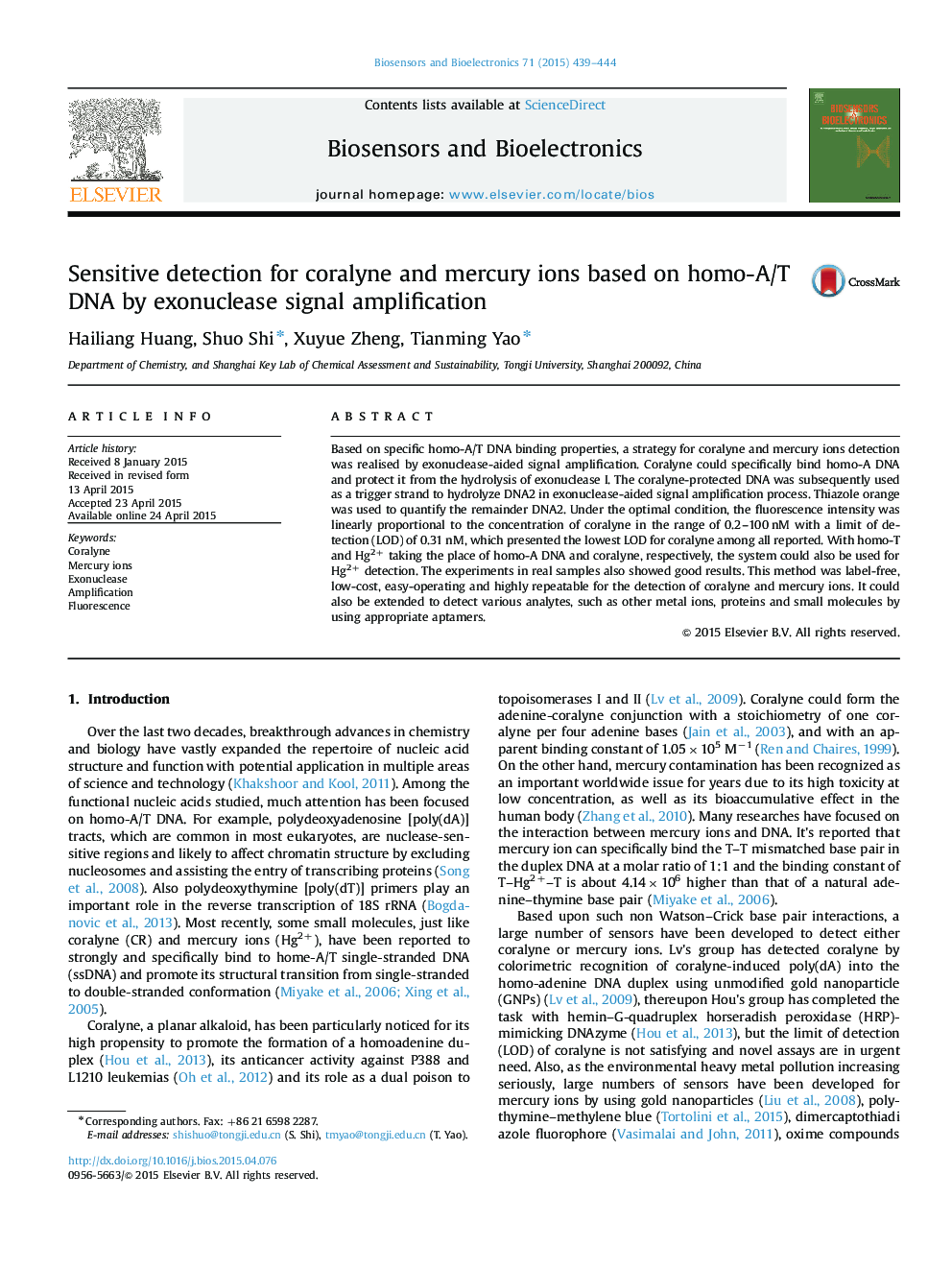| Article ID | Journal | Published Year | Pages | File Type |
|---|---|---|---|---|
| 7232084 | Biosensors and Bioelectronics | 2015 | 6 Pages |
Abstract
Based on specific homo-A/T DNA binding properties, a strategy for coralyne and mercury ions detection was realised by exonuclease-aided signal amplification. Coralyne could specifically bind homo-A DNA and protect it from the hydrolysis of exonuclease I. The coralyne-protected DNA was subsequently used as a trigger strand to hydrolyze DNA2 in exonuclease-aided signal amplification process. Thiazole orange was used to quantify the remainder DNA2. Under the optimal condition, the fluorescence intensity was linearly proportional to the concentration of coralyne in the range of 0.2-100Â nM with a limit of detection (LOD) of 0.31Â nM, which presented the lowest LOD for coralyne among all reported. With homo-T and Hg2+ taking the place of homo-A DNA and coralyne, respectively, the system could also be used for Hg2+ detection. The experiments in real samples also showed good results. This method was label-free, low-cost, easy-operating and highly repeatable for the detection of coralyne and mercury ions. It could also be extended to detect various analytes, such as other metal ions, proteins and small molecules by using appropriate aptamers.
Related Topics
Physical Sciences and Engineering
Chemistry
Analytical Chemistry
Authors
Hailiang Huang, Shuo Shi, Xuyue Zheng, Tianming Yao,
